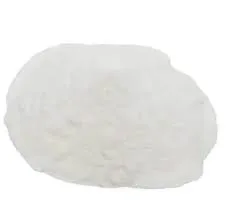
វិច្ឆិកា . 22, 2024 05:36 Back to list
hpmc چیست
Understanding HPMC A Comprehensive Overview
Hydroxypropyl Methylcellulose (HPMC) is a semi-synthetic polymer derived from cellulose, a naturally occurring polymer found in plant cell walls. As a key ingredient in a variety of industries, HPMC plays an essential role in pharmaceuticals, food, cosmetics, and construction materials due to its unique properties and versatility.
Chemical Structure and Properties
HPMC is created through the chemical modification of cellulose, whereby methyl and hydroxypropyl groups are introduced to the cellulose backbone. This modification enhances its solubility in water, allowing HPMC to form clear, viscous solutions. Its molecular structure allows it to possess a wide range of viscosity and gel-forming characteristics, making it suitable for various formulations.
One of the most notable properties of HPMC is its ability to create smooth and stable emulsions. It acts as an effective thickening agent, providing desirable texture to products without interfering with their clarity. Additionally, HPMC is non-toxic, biodegradable, and does not irritate the skin, making it a preferred choice for personal care and pharmaceutical products.
Applications in Pharmaceuticals
In the pharmaceutical industry, HPMC is widely used as an excipient, a substance formulated alongside the active ingredient in medications. Its role as a binder and controlled-release agent is critical in developing tablets and capsules. HPMC can slow the release of active compounds, enabling medications to provide prolonged therapeutic effects and minimizing side effects.
.
HPMC in Food Industry
hpmc چیست

The food industry also benefits from the incorporation of HPMC. It serves as a thickener, emulsifier, and stabilizer in various food products, including sauces, dressings, and frozen desserts. HPMC improves texture and mouthfeel, ensuring a consistent product quality. As a food additive, it is labeled as E464 and is considered safe for consumption, allowing manufacturers to enhance product quality without compromising health standards.
Role in Cosmetics and Personal Care
In the realm of cosmetics and personal care, HPMC is commonly used in lotions, creams, shampoos, and conditioners. Its emulsifying and thickening properties contribute to the formulation of stable and effective products. HPMC helps in maintaining the desired viscosity of creams while allowing a smooth application on the skin.
Furthermore, due to its film-forming abilities, HPMC is often employed in hair care products to provide hold and shine while also offering moisturizing properties. This versatility makes it an indispensable ingredient in enhancing product performance and consumer experience.
Contribution to Construction Industry
Interestingly, HPMC also finds significant application in the construction industry. In cement and mortar, HPMC is utilized as a water-retaining agent, enhancing workability and extending the drying time, which is critical for achieving optimal adhesion and performance. Its ability to improve the consistency of construction materials further contributes to the efficiency and quality of building projects.
Conclusion
In summary, Hydroxypropyl Methylcellulose is a multi-faceted polymer that plays a pivotal role across various industries. Its unique properties as a thickening, stabilizing, and emulsifying agent make it a vital ingredient in pharmaceuticals, food products, cosmetics, and construction materials. As sustainability and safety become increasingly important to consumers and manufacturers alike, HPMC stands out as a non-toxic and biodegradable option, ensuring it will remain an essential component in product formulations for years to come. Its versatility and effectiveness emphasize the importance of innovations in chemical processing and material science, reflecting the ongoing advancements in technology and consumer needs.
-
Versatile Hpmc Uses in Different Industries
NewsJun.19,2025
-
Redispersible Powder's Role in Enhancing Durability of Construction Products
NewsJun.19,2025
-
Hydroxyethyl Cellulose Applications Driving Green Industrial Processes
NewsJun.19,2025
-
Exploring Different Redispersible Polymer Powder
NewsJun.19,2025
-
Choosing the Right Mortar Bonding Agent
NewsJun.19,2025
-
Applications and Significance of China Hpmc in Modern Industries
NewsJun.19,2025







